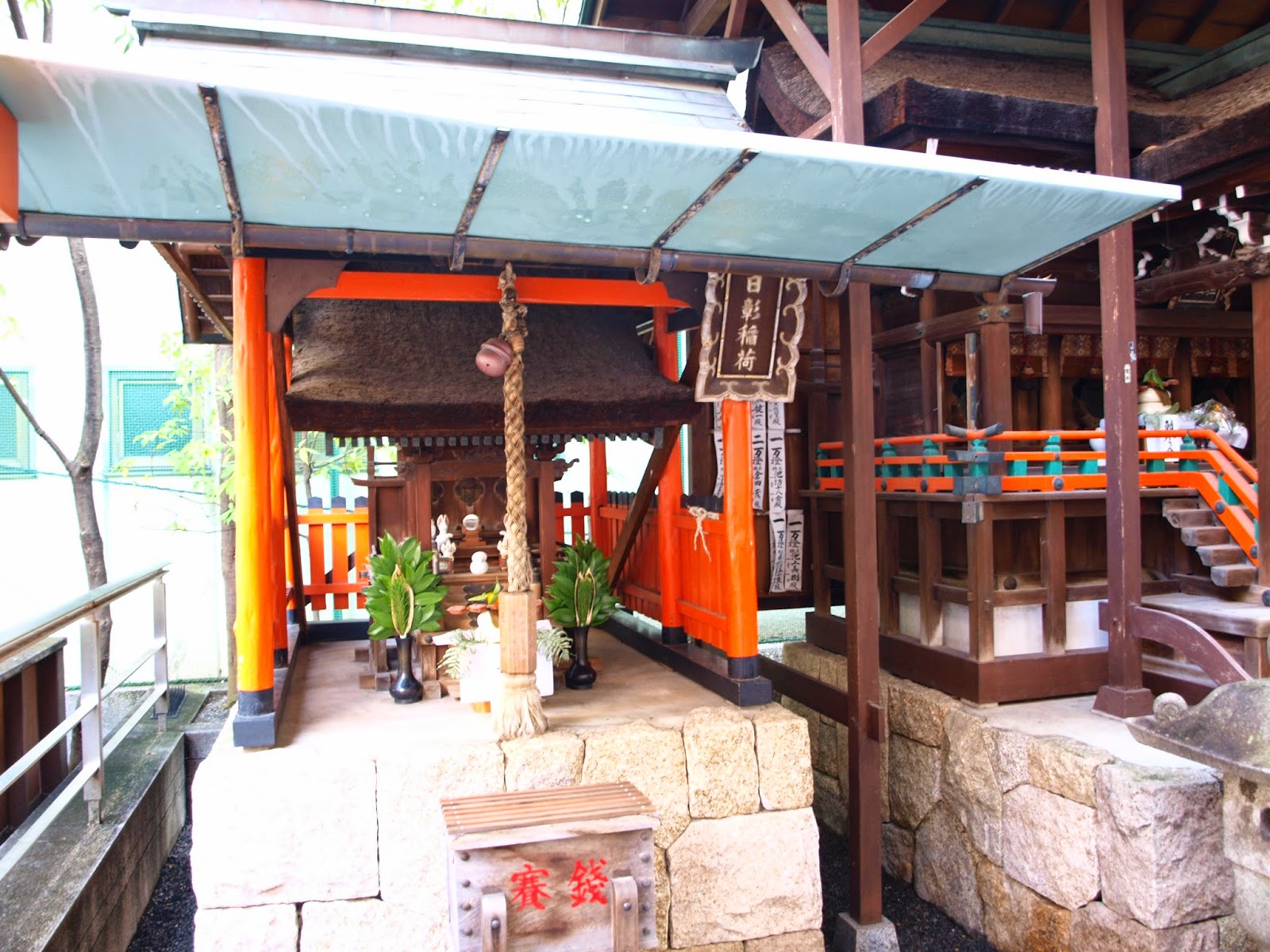Higashi Honganji (eastern Temple of the Original Wow) is the other temple of the Jodo Shin sect (True pure Land sect).
It has been established in 1602 by the Shogun Tokugawa Ieyasu when he split the Shin sect in two in order to diminish its power.
Its main hall, the Goeido, is Kyoto's largest wooden structure and it is dedicated to Shinran, the sect's founder.
Friday, 20 February 2015
Wednesday, 18 February 2015
Ryoma Sakamoto in Fushimi
Fushimi is one of the eleven wards of Kyoto.
It is well known for its Inari shrine, its breweries of sake but also for Ryoma-dori shopping street which name comes from Ryoma Sakamoto, the famous samurai.
In 1866, Ryoma Sakamoto was attacked by the Bakufu government force while he was at a meeting at Teradaya's Inn.
He managed to escape thanks to his Smith & Wesson revolver but also to Oryo who became later his wife.
This shop shutter art with picture of Ryoma Sakamoto has been prepared for the Fushimi +Art Festival with the collaboration of the Kyoto University of Art and Design.
It is well known for its Inari shrine, its breweries of sake but also for Ryoma-dori shopping street which name comes from Ryoma Sakamoto, the famous samurai.
In 1866, Ryoma Sakamoto was attacked by the Bakufu government force while he was at a meeting at Teradaya's Inn.
He managed to escape thanks to his Smith & Wesson revolver but also to Oryo who became later his wife.
This shop shutter art with picture of Ryoma Sakamoto has been prepared for the Fushimi +Art Festival with the collaboration of the Kyoto University of Art and Design.
Tuesday, 17 February 2015
Nishi Honganji - Kyoto
Nishi Hongan-ji (Western Temple of the Original Vow) is one of the two temples of the Jodo Shinshu Honganji sect of
Buddhism in Kyoto Eastern Temple
It is believed that this temple originated with the construction of the mausoleum that contained the grave of the high priest Shinran, who was the founder of this temple.
Nishi Hongan-ji is listed as one of the Historic
Monuments of Ancient Kyoto as a UNESCO World Heritage SIte.
Friday, 13 February 2015
Pontochō
Pontochō is a narrow street running between Shijo-dori
and Sanjo-dori in the Hanamachi district in Kyoto
It is known for geisha who has existed there since at least the 16th century. Nowadays, it is still home of
geisha houses and tea houses but also of traditional Japanese restaurants, bars
and of the Pontochō Kaburenjō Theatre
Along Kamo river
Thursday, 12 February 2015
Rokkaku-do - Kyoto
Rokkaku temple is located southeast of the intersection of Karasuma and Sanjo street in central Kyoto .
The temple is the site of the birth and development of ikebana, the Japanese art of arranging flowers. Indeed, flowers started to be placed on the altars when Buddhism was introduced in Japan in about 538.
Taishi-do hall
The 16 disciples of Buddha. The are called rakan which is the name given to the monks who guard the teaching of Buddha.
Jizo facing north in direction of the Kyoto Imperial Palace, standing guard over the imperial family.
Subscribe to:
Posts (Atom)




























































